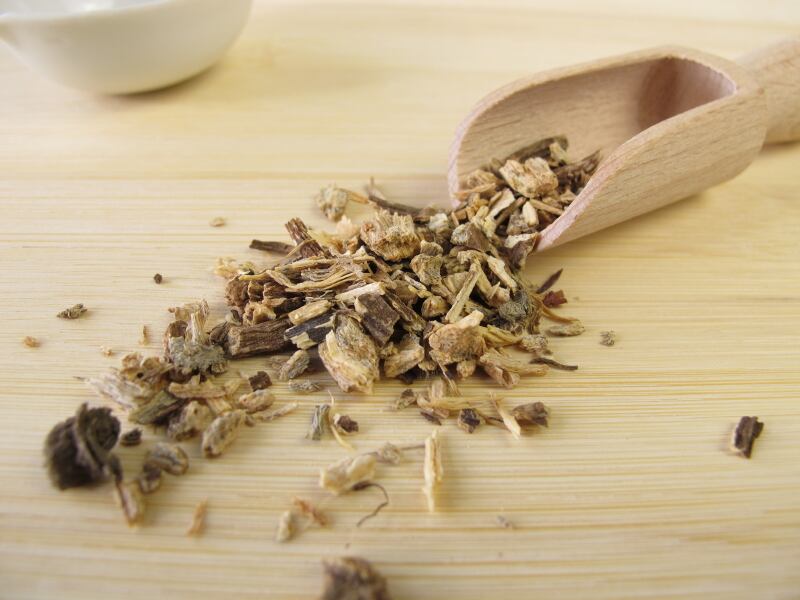Here, researchers from the University of Oslo succeeded in harnessing high performance thin layer chromatography (HPTLC) to better separate and quantify the sample of chemical constituents.
The complementary use of DNA metabarcoding was used to overcome HPTLC’s limited resolution to detail both the presence of the target species and of all other species.
“Advances in sequencing technology make the use of DNA metabarcoding promising for large-scale authentication of herbal products,” said the team, which also included scientists from the National Institute of Research and Development for Biological Sciences in Romania.
“Nevertheless, standardisation is required before it can be implemented as a routine complementary analytical method for regulatory quality control and herbal pharmacovigilance.”
Echinacea sales
Sales of herbal dietary supplements have seen year-on-year increases of 5–10%, and in 2014 sales reached an estimated total of more than €5.5bn ($6.4bn), with Echinacea among the top five top grossing taxa.
Today Echinacea is cultivated widely in Europe and North America for use in commercial herbal products such as herbal teas, capsules, tablets, powders, tinctures and beverages.
In Europe, a study on the use of food supplements and medicines showed that Echinacea and Ginkgo are the most common herbals.
The increased use of Echinacea species has been overshadowed by concerns about adulterated products resulting from challenges in identification.
The issue is complicated by overlapping morphological variability and frequent hybridisation between species.
While DNA barcoding and metabarcoding are not yet validated for use in a regulatory context of quality control, there are several studies advocating its usefulness for herbal product authentication and pharmacovigilance.
“Echinacea is challenging because it is a ‘young’ group in terms of evolutionary time,” explained Dr Sandra Namoff, DNA program advisor at Alkemist Labs, an independent US-based contract-testing laboratory that offers botanical and dietary supplement testing services.
“Species of Echinacea have evolved recently, so analyses that sample large portions of the genome or target specific variable DNA regions are required to understand differences between multiple species.”
“As DNA based methods develop, we will be better able to identify botanicals despite these challenges. We cannot change how plants evolve. We can only develop better methods to understand evolution and how it relates to authentication, which is why DNA methods are so exciting.”
Study highlights
In the study, fifty-three Echinacea herbal products sold in Europe were used to analyse the method’s suitability in plant identification, detecting substitutes, adulterants and other unlabeled plant constituents.
Using DNA metabarcoding, Echinacea species were detected in 34 out of the 38 retained products (89%).
The study also found some herbal products showed discrepancies between ingredients listed on the label and the ones detected using DNA metabarcoding, registering an overall ingredient fidelity of only 43%.
Citing previous studies, the team believed that the results related to the authentication of herbal products using DNA metabarcoding needed to focus primarily on checking the presence of labelled ingredients and contaminants.
“The presence of non-listed species may be explained by various factors, including but not limited to the deliberate adulteration and unintentional substitution, that may occur starting from the early stage of the supply chain (i.e., cultivation, transport, storage), to the manufacturing process and the commercialization of the final products,” they said.
“DNA metabarcoding is a highly sensitive method and even traces of DNA, from grains of pollen or from plant dust in the entire manufacturing process that may accidentally contaminate the product, can be detected and identified.”
Potential of DNA method
They added that while HPTLC was not an ideal method for detection of substitution and adulteration within marketed herbal products, it was a powerful and cost-effective method to identify specific chemotaxonomic markers, and thus applicable in the quality control of the derived herbal products.
“[The study] showed that DNA methods are beginning to complement already well established methods of botanical identification,” added Dr Namoff.
“The paper shows that chemical methods are still the best way to verify target active compounds in Echinacea.
“The paper also points out the strength of DNA methods in showing what’s NOT on the label. The study found that about 75% of the products tested contained non-target species. The DNA method detailed is primarily suited to find trace adulterants in products.”
NutraIngredients also reached out to the American Herbal Products Association (AHPA), who were unavailable for comment.
Source: Phytomedicine
Published online ahead of print: doi.org/10.1016/j.phymed.2018.03.058
“What’s in the box? Authentication of Echinacea herbal products using DNA metabarcoding and HPTLC.”
Authors: AC Raclariu et al.

